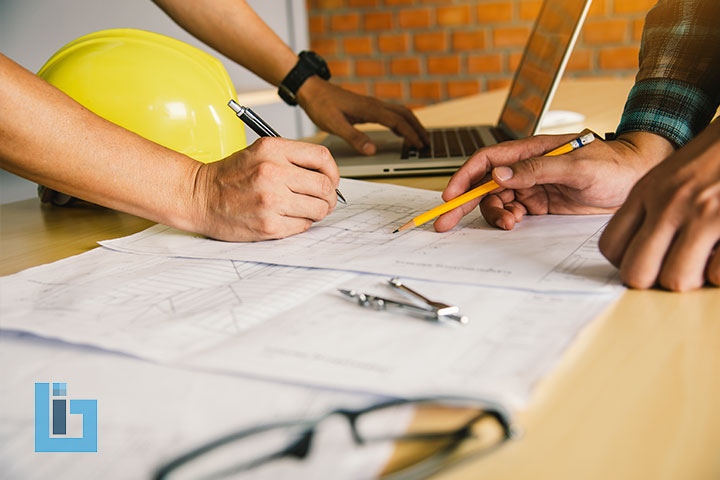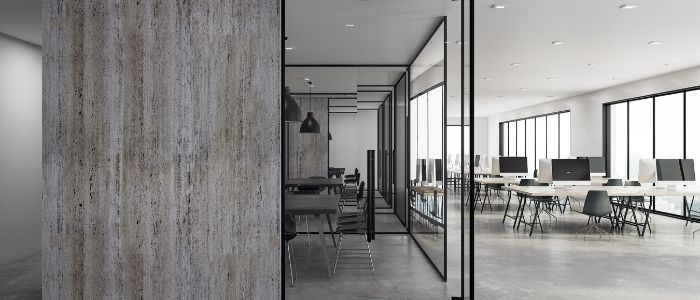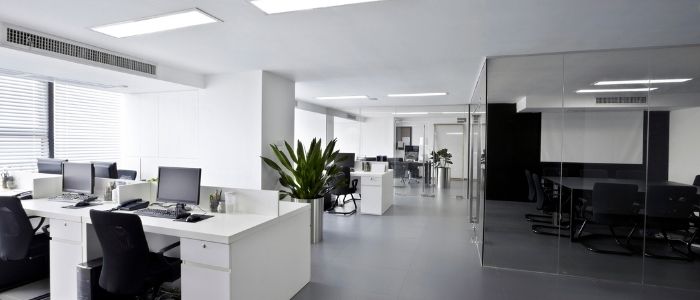
Table of content:
- 1. How much does it cost per square foot?
- 2. Factors that affect construction costs
- 3. Cost of the commercial office space
- 4. Operating costs
- 5. Hard costs vs. soft costs
- 6. Payment options
In the intricate realm of Canadian commercial real estate, the financial facets of construction projects stand as crucial determinants of success. The average commercial building construction cost per square foot emerges as a compass guiding project budgets among the array of financial metrics. However, this metric is far from static; it’s a dynamic figure that dances within a spectrum of variables. In this in-depth exploration, we delve into the multifaceted nature of this cost metric, offering insights and a comprehensive breakdown of the current price landscape.
1. How much does it cost per square foot?
Currently, the average commercial building construction cost per square foot in Canada is CAD $200 to $300. However, this figure is a dynamic entity swayed by a constellation of factors, including location dynamics, project intricacies, material choices, labor dynamics, regulatory compliance, and economic undulations.
For precision in budget projections, it’s highly recommended to collaborate with seasoned professionals. Experts who possess an intimate understanding of local market dynamics, construction practices, and the regulatory landscape can serve as invaluable partners. Through their guidance, investors, developers, and stakeholders can navigate the labyrinth of commercial construction costs, ensuring that their projects remain aligned with financial goals while delivering the architectural and functional excellence they envision.
2. Factors that affect construction costs
Understanding Canada’s average commercial building construction cost per square foot requires delving into a complex matrix of factors contributing to its variability. While industry estimates generally position this figure within the CAD $200 to $300 per square foot range, it’s crucial to acknowledge the factors that can sway it within this spectrum:
Location matters
Geographical location is a cornerstone influencer of construction costs. Major urban centers like Toronto, Vancouver, and Montreal often command higher costs due to elevated labor rates, increased demand for materials, and stricter regulations. Smaller towns or rural areas might witness comparatively lower expenses.
Decoding building type and complexity
The very nature of the commercial building being constructed shapes its cost. Is it an office space, a retail center, an industrial warehouse, or something specialized? Each category has its requirements, intricacies, and associated costs.
Materials and the quality quandary
The materials chosen for construction and the desired level of quality can significantly impact the cost per square foot. Opting for premium materials and top-tier finishes may elevate the price while making cost-effective material choices can help manage the budget.
Architectural aspirations and unique features
The architectural aspirations of a project can breathe life into its design, but they also influence costs. One-of-a-kind architectural elements, such as custom facades, complex roofing structures, and intricate interior designs, often require specialized labor and materials, thus contributing to a higher overall cost.
Conquering site conditions and accessibility
The condition of the construction site, including soil quality, topography, and accessibility, can significantly impact costs. Sites with challenging conditions might necessitate additional groundwork, foundation work, or infrastructure adjustments, contributing to higher expenses.
Navigating labor dynamics and market factors
The labor component substantially contributes to construction costs. Fluctuations in labor availability, market demand, and prevailing wages can influence the final price. Regions experiencing a skilled labor shortage might witness escalated labor costs.
The regulatory dance
Permits and Compliance Navigating the regulatory landscape is a non-negotiable aspect of construction. Meeting regulatory requirements and obtaining the necessary permits can introduce additional expenses. Strict building codes, environmental regulations, and associated permit fees are all factors to consider.
Economic Winds and material price
Swirls Economic conditions and market trends influence construction material prices. Fluctuations in commodity prices—be it steel, concrete, lumber, or other resources—can undeniably impact the overall project cost.
3. Commercial office space costs
The first thing you want to determine is the type of commercial office space that you need to develop. There are 3 principal types of office spaces to develop:
- Basic office space
- Mid-range office space
- Executive office space
Naturally, these spaces carry different types of costs…
A basic office space will be more affordable than an executive office space, but you may need to develop executive space for your commercial building. Location also plays an important role. The cost per square foot will be higher in some markets than others, as outlined in this helpful article.
You can use this calculator provided by BuildingJournal to do a quick compare and contrast on different types of developments to get an accurate picture of how much office space you need.

Basic office space
This type of space is best suited for very small, start-up-like companies. These businesses tend to have 1-20 employees and, therefore, don’t require a ton of space to make a healthy working environment. If you’re developing a building designed for smaller companies, you can anticipate a more affordable average commercial construction cost per square foot.
Mid-range office space
Mid-range office spaces are for mid-size companies with 100 or more employees. There is a requirement for more room than basic office spaces, which require larger commercial real estate. They also require meeting spaces and often have private offices for the founders or C-suite leaders. Factor those variables into your budget to calculate the cost per square foot.
Executive office space
Executive office spaces are for the large corporations that have upwards of 1,000 or more employees. These companies often require multiple floors of real estate space with many different meeting rooms and private offices stationed throughout their suites. If your building will house several large corporations, expect to develop more lucrative office environments and expect the cost to construct them to go up.

For more information about office space construction costs, check out our other article The Cost of Office Space Construction.
4. Operating costs for building construction
In addition to forecasting the construction costs for the office space, you need to account for ongoing operating costs for each tenant. Operating costs are net expenses to maintain an office environment and ensure it continues to uphold appropriate building codes.
There’s a great guide on commercial real estate operating expenses that details the cost borne by both the tenants and the landlord of a commercial building. Here’s a quick rundown of some of the most common operating costs to consider.
Office furniture
Some tenants will have their own furniture to bring into the space. For those that don’t, as the owner of a commercial building, you need to provide appropriate office furniture. Supportive office chairs could cost $350 apiece while desks could cost up to $5,000. Calculate the number of estimated employees and factor in delivery costs to shape your budget appropriately.
Windows
Commercial windows – and doors, for that matter – are more expensive than residential windows. Commercial space is prone to significant swings in temperature, requiring vinyl materials, aluminum frames, aesthetic designs, and energy efficiencies. Make sure you fully inform yourself about the difference between commercial and residential windows when developing your building.
Foundation
Foundation is one of your most expensive costs. Most commercial buildings are built on solid foundations of concrete, and concrete costs $113 per cubic yard. Multiply that by the square footage of your building and you can tally up the cost.
Flooring
Flooring costs range between $3.00 and up to $20.00 per square foot. But commercial flooring requires more expensive equipment to install than residential flooring, which you’ll need to factor into your budget.

5. Hard costs vs. soft costs
On top of calculating the office space and operating costs, you’ll also want to forecast how much you’ll spend on maintenance and administrative costs. These are your hard and soft costs that will require constant vigilance to ensure the building is up to code.
Examples of hard costs
Your hard costs are the maintenance costs that are used to upkeep the state of the building and customize the interior for different tenants. These include painting costs, fire alarm installations, sprinkler systems, drywall, framing, electrical wiring, plumbing, and other installation costs.
You can expect many of these costs to become ongoing expenses as the building is put to use over time. This will be an important part of your overall commercial building budget.
Examples of soft costs
Your soft costs are the administrative costs involved with constructing the commercial building. These include your building permits, lawyer fees, planning, and inspection costs that will dictate when and how your building is approved to open for business. Some of these costs will be recurring costs that require renewals to keep the building up to code so keep track of all of the key dates so you don’t run into any trouble down the road.

6. Payment options of commercial construction
Once you negotiate with tenants to move into the building, you’ll want to recalculate the value of the development. You want to take the average commercial building construction cost per square foot that you, as the building owner, paid for the development, and increase the value per square foot when leasing out to prospective tenants. Rent, building standard allowances, and other revenue generating tools can earn significant ROI on your construction costs.
Discounted rent
Sometimes, tenants may negotiate a lower cost per square foot when agreeing to lease out space in your building. There are a handful of guides on how to negotiate commercial leases that building owners can use to reach an understanding with tenants. Make sure the agreed upon rental rate is a happy medium between your ideal rate and what the tenant deems fair.
Building standard allowance
You’ll also want to allocate funds for a building standard allowance or a turnkey office build-out payment. Put simply, this is money that building owners will provide tenants for the cost of moving into a new space, or to make improvements to the interior space of the building.
Final thoughts on building construction costs
As you can see, calculating the average commercial building construction cost per square foot is a multi-step endeavour. There are a lot of costs indirectly related to the construction of the building that must be included when calculating the true value of your building. To learn more, our Construction Consultant Services will assist you with your project costs. Additionally, before moving forward, it is important that you learn the difference between renovation costs and construction costs.